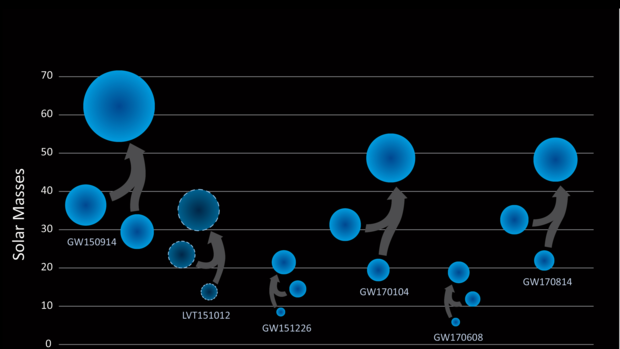LIGO and Virgo announce the detection of a black hole binary merger from June 8, 2017

News Release • November 15, 2017
Scientists searching for gravitational waves have confirmed yet another detection from their fruitful observing run earlier this year. Dubbed GW170608, the latest discovery was produced by the merger of two relatively light black holes, 7 and 12 times the mass of the sun, at a distance of about a billion light-years from Earth. The merger left behind a final black hole 18 times the mass of the sun, meaning that energy equivalent to about 1 solar mass was emitted as gravitational waves during the collision.
This event, detected by the two NSF-supported LIGO detectors at 02:01:16 UTC on June 8, 2017 (or 10:01:16 pm on June 7 in US Eastern Daylight time), was actually the second binary black hole merger observed during LIGO’s second observation run since being upgraded in a program called Advanced LIGO. But its announcement was delayed due to the time required to understand two other discoveries: a LIGO-Virgo three-detector observation of gravitational waves from another binary black hole merger (GW170814) on August 14, and the first-ever detection of a binary neutron star merger (GW170817) in light and gravitational waves on August 17.
A paper describing the newly confirmed observation, “GW170608: Observation of a 19-solar-mass binary black hole coalescence,” authored by the LIGO Scientific Collaboration and the Virgo Collaboration has been submitted to The Astrophysical Journal Letters and is available to read on the arXiv. Additional information for the scientific and general public can be found at http://www.ligo.org/detections/GW170608.php.
See full text